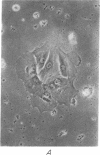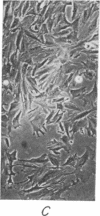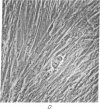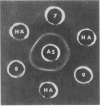Abstract
Clonal cell strains have been isolated from normal human liver. These cells, while resembling fibroblasts morphologically, function as hepatocytes, as shown by their ability to synthesize and secrete an antigen identical to human serum albumin. Human diploid and aneuploid cell lines from nonliver sources do not exhibit this property. The spectrum of serum proteins synthesized varied from clone to clone and cell line to cell line.
Keywords: human embryonic cells, human hepatocytes, human liver cells, cytodifferentiation
Full text
PDF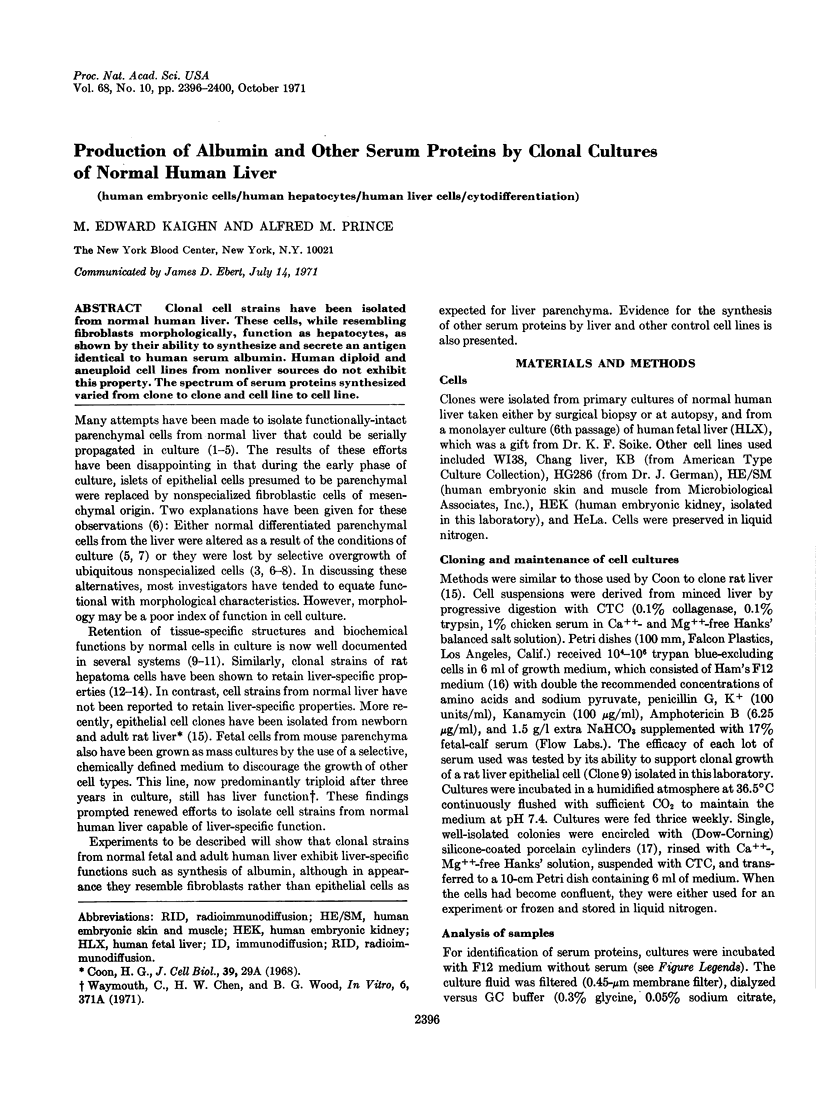
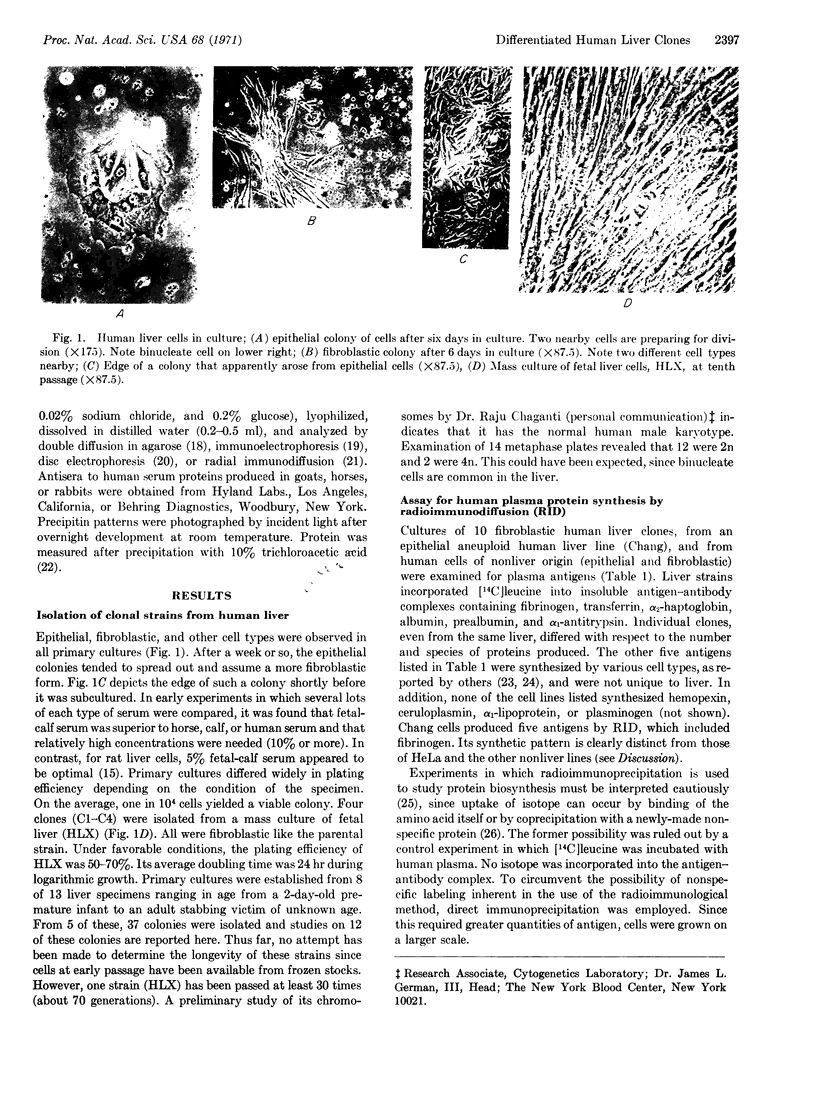
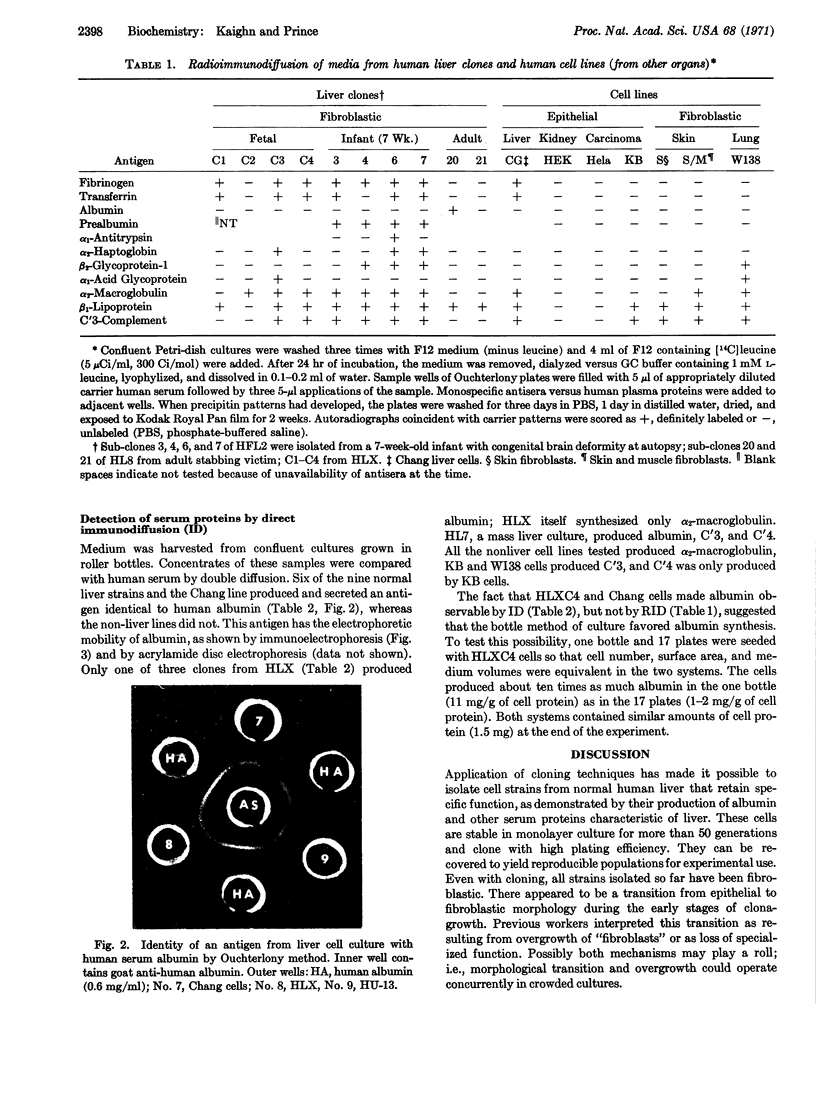
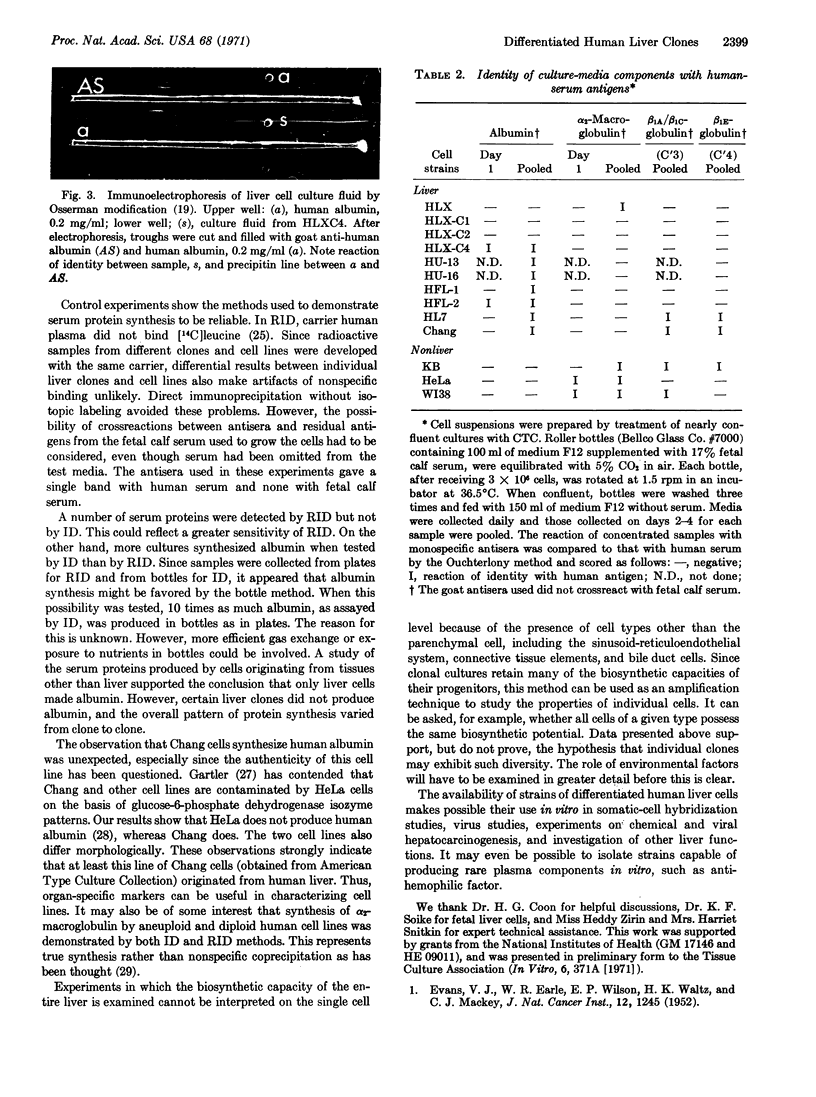
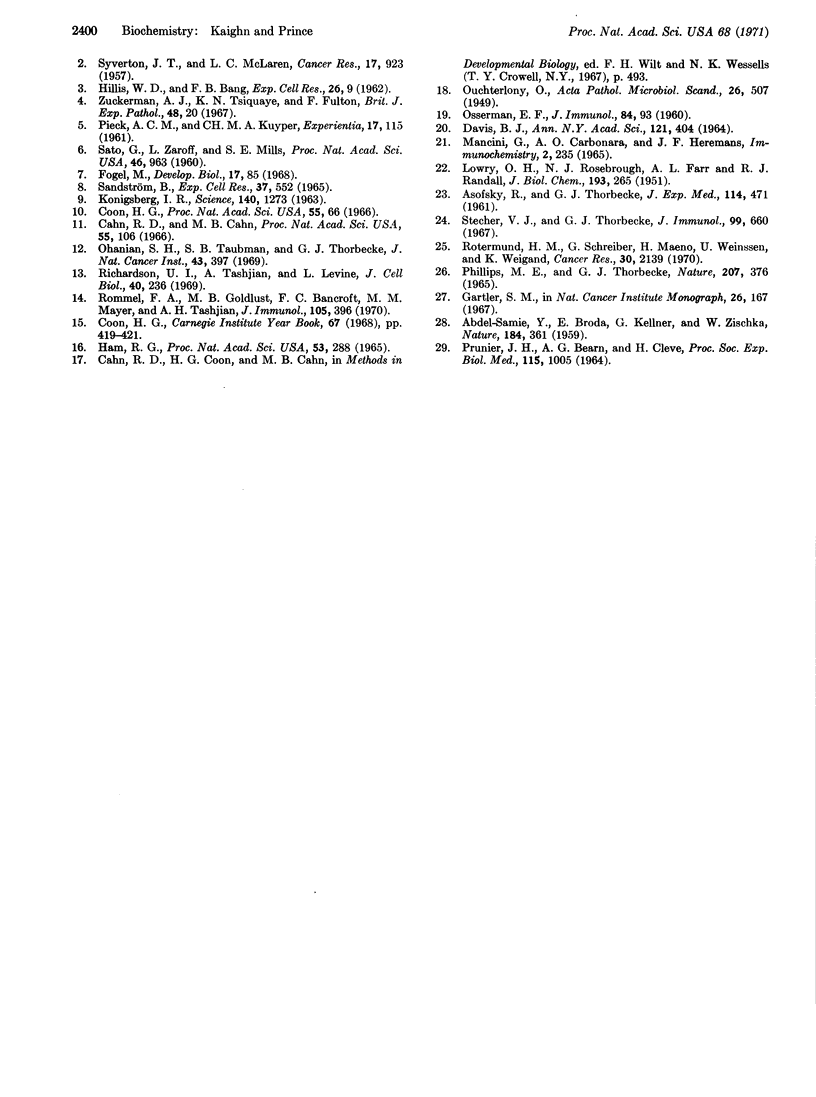
Images in this article
Selected References
These references are in PubMed. This may not be the complete list of references from this article.
- ABDEL-SAMIE Y., BRODA E., KELLNER G., ZISCHKA W. Production of serum albumin and of globulins by chick mesenchymal tissue and by HeLa tumour tissue in culture. Nature. 1959 Aug 1;184(Suppl 6):361–362. doi: 10.1038/184361a0. [DOI] [PubMed] [Google Scholar]
- Cahn R. D., Cahn M. B. Heritability of cellular differentiation: clonal growth and expression of differentiation in retinal pigment cells in vitro. Proc Natl Acad Sci U S A. 1966 Jan;55(1):106–114. doi: 10.1073/pnas.55.1.106. [DOI] [PMC free article] [PubMed] [Google Scholar]
- Coon H. G. Clonal stability and phenotypic expression of chick cartilage cells in vitro. Proc Natl Acad Sci U S A. 1966 Jan;55(1):66–73. doi: 10.1073/pnas.55.1.66. [DOI] [PMC free article] [PubMed] [Google Scholar]
- DAVIS B. J. DISC ELECTROPHORESIS. II. METHOD AND APPLICATION TO HUMAN SERUM PROTEINS. Ann N Y Acad Sci. 1964 Dec 28;121:404–427. doi: 10.1111/j.1749-6632.1964.tb14213.x. [DOI] [PubMed] [Google Scholar]
- EVANS V. J., EARLE W. R., WILSON E. P., WALTZ H. K., MACKEY C. J. The growth in vitro of massive cultures of liver cells. J Natl Cancer Inst. 1952 Jun;12(6):1245–1265. [PubMed] [Google Scholar]
- Fogel M. Phenotypic changes in cultured hamster embryonic liver cells as studied by immunofluorescence. Dev Biol. 1968 Jan;17(1):85–100. doi: 10.1016/0012-1606(68)90091-2. [DOI] [PubMed] [Google Scholar]
- Gartler S. M. Genetic markers as tracers in cell culture. Natl Cancer Inst Monogr. 1967 Sep;26:167–195. [PubMed] [Google Scholar]
- HAM R. G. CLONAL GROWTH OF MAMMALIAN CELLS IN A CHEMICALLY DEFINED, SYNTHETIC MEDIUM. Proc Natl Acad Sci U S A. 1965 Feb;53:288–293. doi: 10.1073/pnas.53.2.288. [DOI] [PMC free article] [PubMed] [Google Scholar]
- HILLIS W. D., BANG F. B. The cultivation of human embryonic liver cells. Exp Cell Res. 1962 Feb;26:9–36. doi: 10.1016/0014-4827(62)90199-4. [DOI] [PubMed] [Google Scholar]
- KONIGSBERG I. R. Clonal analysis of myogenesis. Science. 1963 Jun 21;140(3573):1273–1284. doi: 10.1126/science.140.3573.1273. [DOI] [PubMed] [Google Scholar]
- LOWRY O. H., ROSEBROUGH N. J., FARR A. L., RANDALL R. J. Protein measurement with the Folin phenol reagent. J Biol Chem. 1951 Nov;193(1):265–275. [PubMed] [Google Scholar]
- Mancini G., Carbonara A. O., Heremans J. F. Immunochemical quantitation of antigens by single radial immunodiffusion. Immunochemistry. 1965 Sep;2(3):235–254. doi: 10.1016/0019-2791(65)90004-2. [DOI] [PubMed] [Google Scholar]
- OSSERMAN E. F. A modified technique of immunoelectrophoresis facilitating the identification of specific precipitin arcs. J Immunol. 1960 Jan;84:93–97. [PubMed] [Google Scholar]
- Ohanian S. H., Taubman S. B., Thorbecke G. J. Rates of albumin and transferrin synthesis in vitro in rat hepatoma-derived H4II-EC cells. J Natl Cancer Inst. 1969 Aug;43(2):397–406. [PubMed] [Google Scholar]
- PIECK A. C., KUYPER C. M. Establishment of an epithelial cell strain from calf liver in continuous culture. Experientia. 1961 Mar 15;17:115–116. doi: 10.1007/BF02160817. [DOI] [PubMed] [Google Scholar]
- PRUNIER J. H., BEARN A. G., CLEVE H. SITE OF FORMATION OF THE GROUP-SPECIFIC COMPONENT AND CERTAIN OTHER SERUM PROTEINS. Proc Soc Exp Biol Med. 1964 Apr;115:1005–1007. doi: 10.3181/00379727-115-29101. [DOI] [PubMed] [Google Scholar]
- Phillips M. E., Thorbecke G. J. Serum protein formation of donor type in rat-into-mouse chimaeras. Nature. 1965 Jul 24;207(995):376–378. doi: 10.1038/207376a0. [DOI] [PubMed] [Google Scholar]
- Richardson U. I., Tashjian A. H., Jr, Levine L. Establishment of a clonal strain of hepatoma cells which secrete albumin. J Cell Biol. 1969 Jan;40(1):236–247. doi: 10.1083/jcb.40.1.236. [DOI] [PMC free article] [PubMed] [Google Scholar]
- Rommel F. A., Goldlust M. B., Bancroft F. C., Mayer M. M., Tashjian A. H., Jr Synthesis of the ninth component of complement by a clonal strain of rat hepatoma cells. J Immunol. 1970 Aug;105(2):396–403. [PubMed] [Google Scholar]
- Rotermund H. M., Schreiber G., Maeno H., Weinssen U., Weigand K. The ratio of albumin synthesis to total protein synthesis in normal rat liver, in host liver, and in Morris hepatoma 9121. Cancer Res. 1970 Aug;30(8):2139–2146. [PubMed] [Google Scholar]
- SYVERTON J. T., McLAREN L. C. Human cells in continuous culture. I. Derivation of cell strains from esophagus, palate, liver, and lung. Cancer Res. 1957 Oct;17(9):923–926. [PubMed] [Google Scholar]
- Sato G., Zaroff L., Mills S. E. TISSUE CULTURE POPULATIONS AND THEIR RELATION TO THE TISSUE OF ORIGIN. Proc Natl Acad Sci U S A. 1960 Jul;46(7):963–972. doi: 10.1073/pnas.46.7.963. [DOI] [PMC free article] [PubMed] [Google Scholar]
- Stecher V. J., Thorbecke G. J. Sites of synthesis of serum proteins. 3. Production of beta-1-C, beta-1-E and transferrin by primate and rodent cell lines. J Immunol. 1967 Oct;99(4):660–668. [PubMed] [Google Scholar]
- Zuckerman A. J., Tsiquaye K. N., Fulton F. Tissue culture of human embryo liver cells and the cytotoxicity of aflatoxin B1. Br J Exp Pathol. 1967 Feb;48(1):20–27. [PMC free article] [PubMed] [Google Scholar]




